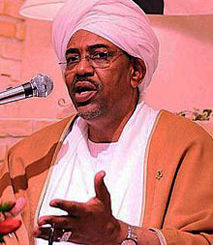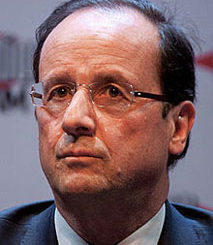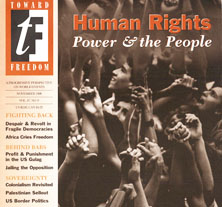
East Africa at the Brink: Hidden Hands Behind Sudan’s Oil War
Whatever hidden hands that continue to exploit Sudan’s woes now need to be exposed and isolated.

Whatever hidden hands that continue to exploit Sudan’s woes now need to be exposed and isolated.

A look at the ideas and social base of the French presidential candidates.

Source: Counterpunch
For little Sayef, there will be no Arab Spring. He lies, just 14 months old, on a small red blanket cushioned by a cheap mattress on the floor, occasionally crying, his head twice the size it should be, blind and paralysed. Sayeffedin Abdulaziz Mohamed – his full name – has a kind face in his outsized head and they say he smiles when other children visit and when Iraqi families and neighbours come into the room.
But he will never know the history of the world around him, never enjoy the freedoms of a new Middle East. He can move only his hands and take only bottled milk because he cannot swallow. He is already almost too heavy for his father to carry. He lives in a prison whose doors will remain forever closed.

Source: The Guardian Unlimited
What to do in the aftermath of the Occupy Wall Street movement, when the protests that started far away – in the Middle East, Greece, Spain, UK – reached the centre, and are now reinforced and rolling out all around the world?
In a San Francisco echo of the OWS movement on 16 October 2011, a guy addressed the crowd with an invitation to participate in it as if it were a happening in the hippy style of the 1960s:
“They are asking us what is our program. We have no program. We are here to have a good time.”

Celebrating 60 years of vision of advocacy for human rights and global democracy, this preview video release looks at Toward Freedom's history, the legacy of the Lloyd family, coverage of Africa in TF's early years, and ongoing activities. With rare photos, maps, and covers from 1952 to 2011.

Source: Tom Dispatch
I speak Spanish to God, Italian to women, French to men, and German to my horse.
— Emperor Charles V
But in which language does one speak to a machine, and what can be expected by way of response? The questions arise from the accelerating data-streams out of which we’ve learned to draw the breath of life, posed in consultation with the equipment that scans the flesh and tracks the spirit, cues the ATM, the GPS, and the EKG, arranges the assignations on Match.com and the high-frequency trades at Goldman Sachs, catalogs the pornography and drives the car, tells us how and when and where to connect the dots and thus recognize ourselves as human beings.
Copyright Toward Freedom 2019